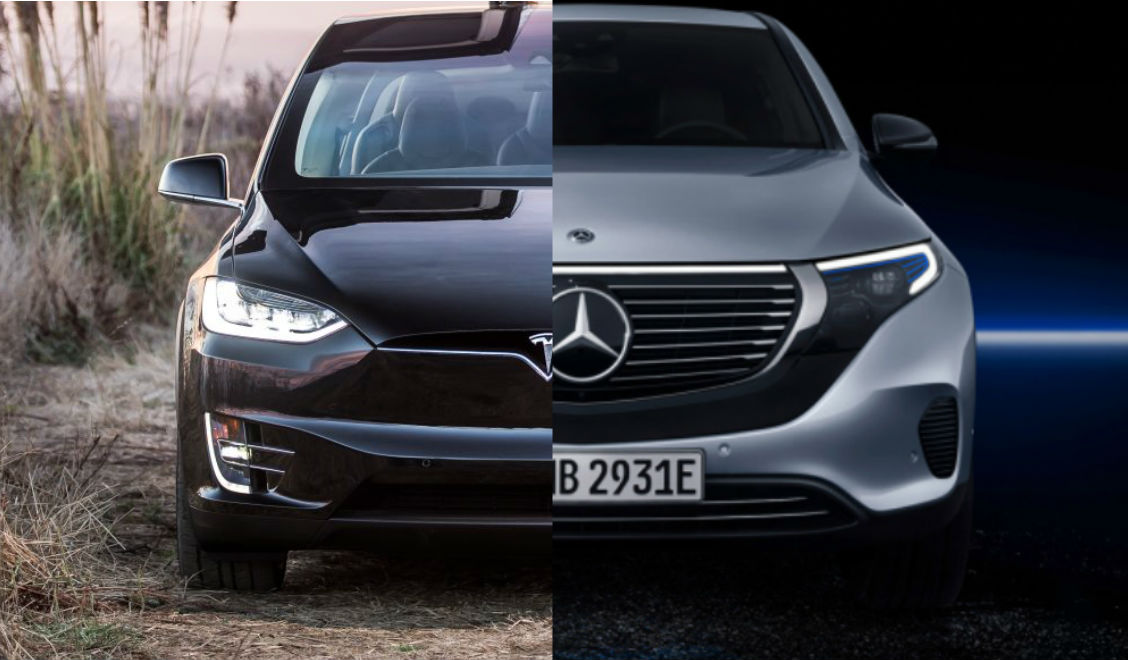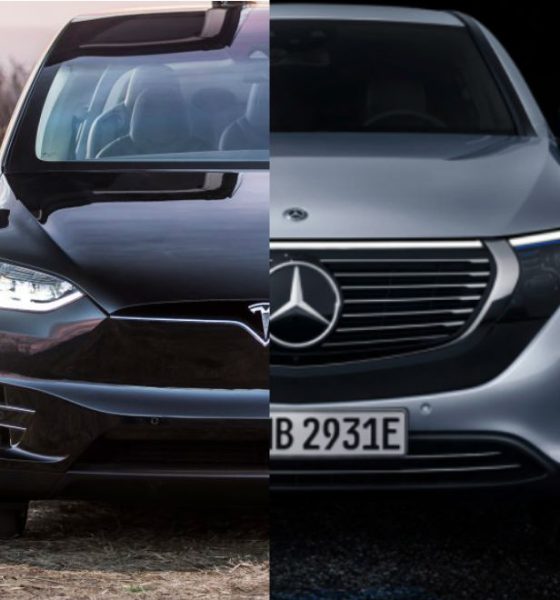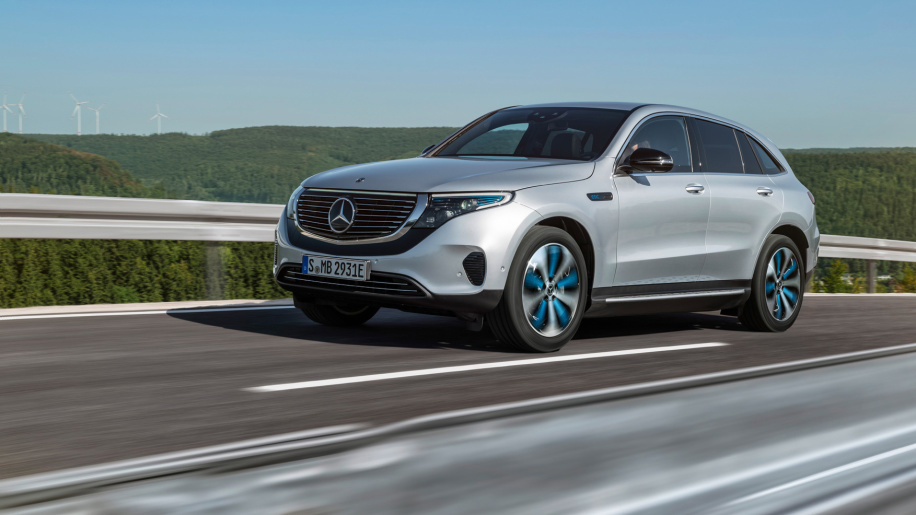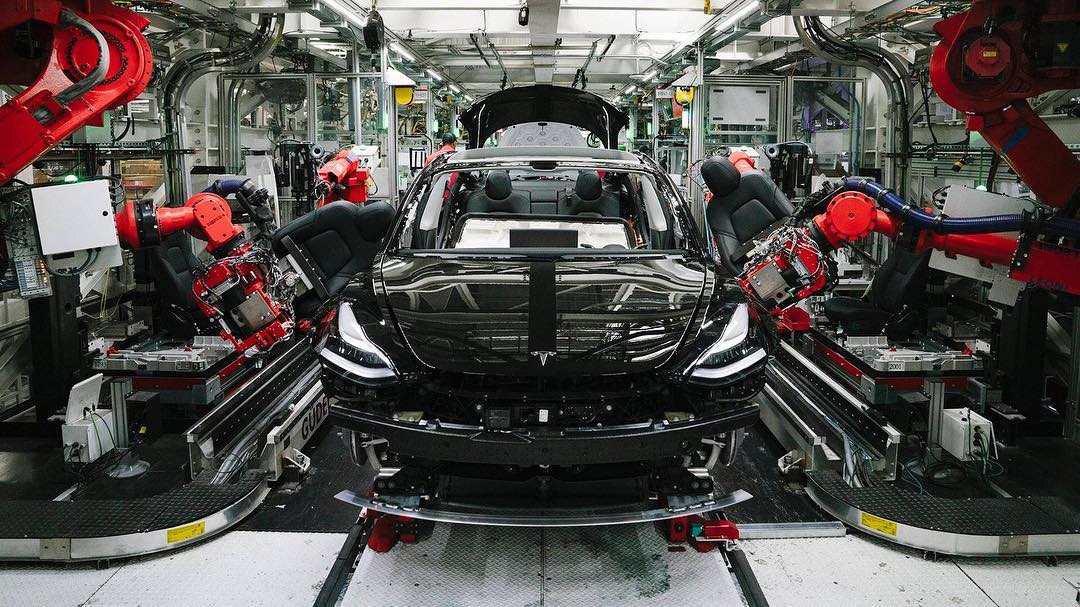

Investor's Corner
Tesla’s experience in electric cars emphasized anew after Mercedes EQC reveal
Earlier today, Tesla stock was given a Sell rating by Goldman Sachs, citing the arrival of competitors from established automakers. Some of these competitors are dubbed as “Tesla Killers,” such as the Jaguar I-PACE and the Mercedes-Benz EQC. The financial firm’s renewed Sell rating on Tesla appears to have affected the sentiment of some investors, resulting in TSLA stock ending the day down 4.21% at $288.95 per share.
Earlier today, the electric car industry also welcomed its latest vehicle from legacy automaker Mercedes-Benz. At an event in Stockholm, Sweden, Daimler AG Chief Executive Officer Dieter Zetsche unveiled the Mercedes-Benz EQC, an all-electric crossover SUV that symbolizes the company’s commitment to the upcoming electrification of the transport industry.
“There is no alternative to betting on electric cars, and we’re going all in. It is starting right now,” Zetsche said.
Mercedes-Benz tried hard with the EQC, with Zetsche stating that the vehicle will be profitable, and that it would “offer the best package” compared to rivals. The EQC also looks very much like a conventional Merc SUV, with its almost understated lines, its high ground clearance, and its tough stance. The EQC’s basic specs are quite decent, with two electric motors that produce 402 hp and 564 lb-ft of torque. The SUV can accelerate from 0-60 mph in 4.9 seconds and hit a top speed of around 112 mph. That being said, the Mercedes-Benz EQC’s range and production date ultimately prove that it won’t be so easy for legacy automakers to gain EV expertise that is comparable to Tesla’s.
The Mercedes-Benz EQC is equipped with an 80 kWh battery pack, which puts its size between the base Model X’s 75 kWh battery pack and the Jaguar I-PACE’s 90 kWh battery. Despite its generous battery size, the EQC’s estimated range is very conservative at around 200 miles per charge. Charging the vehicle from 10% to 80% is also estimated to take around 40 minutes. The EQC’s apparent lack of range has not gone unnoticed. Alex Roy, a veteran of the auto industry, for one, noted that the EQC’s range was a big “miss” for the established German automaker.

In a way, this could be attributed to Mercedes-Benz’s lack of experience in designing and building all-electric cars. And it’s not just Mercedes-Benz, either. Jaguar’s I-PACE is listed with a 240-mile range, but informal, real-world tests online have noted that the vehicle’s battery consumption is quite high. The same could be true for the EQC. It might have a big enough battery, but it could prove to be the electric equivalent of a gas guzzler.
This is something that Tesla has refined over the years. Elon Musk has opted to develop Tesla’s battery packs and even its software in-house, allowing the company to create vehicles that just work. In terms of range, Tesla’s cars usually come very close to their rated range, in some instances even exceeding it. Even the Model X 75D — one of Tesla’s largest, heaviest offerings — could go as far as 237 miles with a 75 kWh battery. Tesla’s progress in developing and building electric cars ultimately cannot be discounted, as Volkswagen AG, a prominent German automaker, was one of the investors willing to help fund Tesla’s attempted privatization.
Another notable detail from the Mercedes-Benz EQC’s unveiling that validated Tesla’s experience in building electric cars is the German-made SUV’s production timeline. Mercedes expects to start manufacturing the EQC sometime next year, with deliveries beginning in 2020. Compared to Tesla’s hyper-aggressive timetables, Mercedes-Benz’s timeline is very conservative, especially considering that the automaker is looking to build the EQC in some of its existing facilities.
A Tesla Model 3 being assembled.
There is very little doubt that Tesla is the company that ultimately made electric cars desirable, proving to consumers that battery-powered vehicles are actually realistic alternatives to fossil fuel-powered cars. Since starting the production of the Tesla Roadster, the company has gained a lot of experience, a lot of it coming from trial and error. Over the years, Tesla has refined its battery technology, to the point where the company is now attempting to hit a battery pack cost of $100 per kWh. Its 2170 cells that power the Model 3 are also proving to be impressive, with Detroit veteran Sandy Munro praising it as some of the finest batteries he has ever analyzed.
A central part of the Tesla Killer thesis is that competitors from established automakers can easily catch up and overtake the California-based company with vehicles that are far superior in quality and performance. If the range and estimated delivery date of the Mercedes-Benz EQC are any indication, it appears that the arrival of these competitors might be just a little bit too late. After all, by 2020, Tesla is planning to start the production of the next-generation Tesla Roadster, a supercar to end all supercars. The Tesla Model Y, a CUV expected to be even more popular than the Model 3, would likely be in production by then as well.
Watch the Mercedes-Benz EQC’s unveiling in the video below.

Investor's Corner
Tesla stock lands elusive ‘must own’ status from Wall Street firm

Tesla stock (NASDAQ: TSLA) has landed an elusive “must own” status from Wall Street firm Melius, according to a new note released early this week.
Analyst Rob Wertheimer said Tesla will lead the charge in world-changing tech, given the company’s focus on self-driving, autonomy, and Robotaxi. In a note to investors, Wertheimer said “the world is about to change, dramatically,” because of the advent of self-driving cars.
He looks at the industry and sees many potential players, but the firm says there will only be one true winner:
“Our point is not that Tesla is at risk, it’s that everybody else is.”
The major argument is that autonomy is nearing a tipping point where years of chipping away at the software and data needed to develop a sound, safe, and effective form of autonomous driving technology turn into an avalanche of progress.
Wertheimer believes autonomy is a $7 trillion sector,” and in the coming years, investors will see “hundreds of billions in value shift to Tesla.”
A lot of the major growth has to do with the all-too-common “butts in seats” strategy, as Wertheimer believes that only a fraction of people in the United States have ridden in a self-driving car. In Tesla’s regard, only “tens of thousands” have tried Tesla’s latest Full Self-Driving (Supervised) version, which is v14.
Tesla Full Self-Driving v14.2 – Full Review, the Good and the Bad
When it reaches a widespread rollout and more people are able to experience Tesla Full Self-Driving v14, he believes “it will shock most people.”
Citing things like Tesla’s massive data pool from its vehicles, as well as its shift to end-to-end neural nets in 2021 and 2022, as well as the upcoming AI5 chip, which will be put into a handful of vehicles next year, but will reach a wider rollout in 2027, Melius believes many investors are not aware of the pace of advancement in self-driving.
Tesla’s lead in its self-driving efforts is expanding, Wertheimer says. The company is making strategic choices on everything from hardware to software, manufacturing, and overall vehicle design. He says Tesla has left legacy automakers struggling to keep pace as they still rely on outdated architectures and fragmented supplier systems.
Tesla shares are up over 6 percent at 10:40 a.m. on the East Coast, trading at around $416.
Investor's Corner
Tesla analyst maintains $500 PT, says FSD drives better than humans now
The team also met with Tesla leaders for more than an hour to discuss autonomy, chip development, and upcoming deployment plans.

Tesla (NASDAQ:TSLA) received fresh support from Piper Sandler this week after analysts toured the Fremont Factory and tested the company’s latest Full Self-Driving software. The firm reaffirmed its $500 price target, stating that FSD V14 delivered a notably smooth robotaxi demonstration and may already perform at levels comparable to, if not better than, average human drivers.
The team also met with Tesla leaders for more than an hour to discuss autonomy, chip development, and upcoming deployment plans.
Analysts highlight autonomy progress
During more than 75 minutes of focused discussions, analysts reportedly focused on FSD v14’s updates. Piper Sandler’s team pointed to meaningful strides in perception, object handling, and overall ride smoothness during the robotaxi demo.
The visit also included discussions on updates to Tesla’s in-house chip initiatives, its Optimus program, and the growth of the company’s battery storage business. Analysts noted that Tesla continues refining cost structures and capital expenditure expectations, which are key elements in future margin recovery, as noted in a Yahoo Finance report.
Analyst Alexander Potter noted that “we think FSD is a truly impressive product that is (probably) already better at driving than the average American.” This conclusion was strengthened by what he described as a “flawless robotaxi ride to the hotel.”
Street targets diverge on TSLA
While Piper Sandler stands by its $500 target, it is not the highest estimate on the Street. Wedbush, for one, has a $600 per share price target for TSLA stock.
Other institutions have also weighed in on TSLA stock as of late. HSBC reiterated a Reduce rating with a $131 target, citing a gap between earnings fundamentals and the company’s market value. By contrast, TD Cowen maintained a Buy rating and a $509 target, pointing to strong autonomous driving demonstrations in Austin and the pace of software-driven improvements.
Stifel analysts also lifted their price target for Tesla to $508 per share over the company’s ongoing robotaxi and FSD programs.
Investor's Corner
Tesla wins $508 price target from Stifel as Robotaxi rollout gains speed
The firm cited meaningful progress in Tesla’s robotaxi roadmap, ongoing Full Self-Driving enhancements, and the company’s long-term growth initiatives.

Tesla received another round of bullish analyst updates this week, led by Stifel, raising its price target to $508 from $483 while reaffirming a “Buy” rating. The firm cited meaningful progress in Tesla’s robotaxi roadmap, ongoing Full Self-Driving enhancements, and the company’s long-term growth initiatives.
Robotaxi rollout, FSD updates, and new affordable cars
Stifel expects Tesla’s robotaxi fleet to expand into 8–10 major metropolitan areas by the end of 2025, including Austin, where early deployments without safety drivers are targeted before year-end. Additional markets under evaluation include Nevada, Florida, and Arizona, as noted in an Investing.com report. The firm also highlighted strong early performance for FSD Version 14, with upcoming releases adding new “reasoning capabilities” designed to improve complex decision-making using full 360-degree vision.
Tesla has also taken steps to offset the loss of U.S. EV tax credits by launching the Model Y Standard and Model 3 Standard at $39,990 and $36,990, Stifel noted. Both vehicles deliver more than 300 miles of range and are positioned to sustain demand despite shifting incentives. Stifel raised its EBITDA forecasts to $14.9 billion for 2025 and $19.5 billion for 2026, assigning partial valuation weightings to Tesla’s FSD, robotaxi, and Optimus initiatives.
TD Cowen also places an optimistic price target
TD Cowen reiterated its Buy rating with a $509 price target after a research tour of Giga Texas, citing production scale and operational execution as key strengths. The firm posted its optimistic price target following a recent Mobility Bus tour in Austin. The tour included a visit to Giga Texas, which offered fresh insights into the company’s operations and prospects.
Additional analyst movements include Truist Securities maintaining its Hold rating following shareholder approval of Elon Musk’s compensation plan, viewing the vote as reducing leadership uncertainty.
@teslarati Tesla Full Self-Driving yields for pedestrians while human drivers do not…the future is here! #tesla #teslafsd #fullselfdriving ♬ 2 Little 2 Late – Levi & Mario








